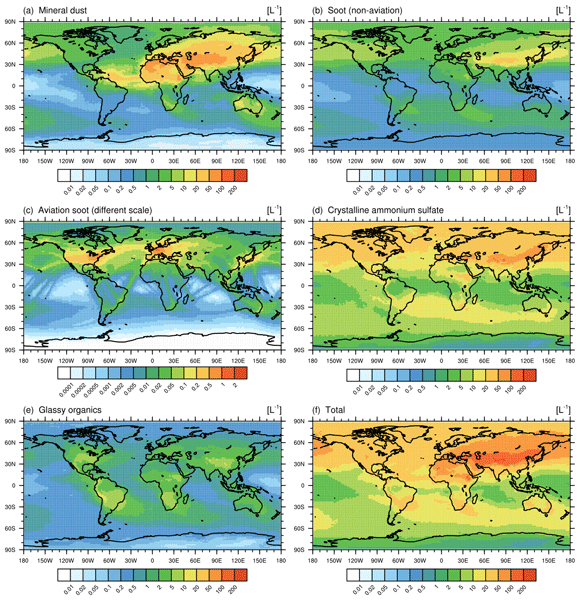New publication in Atmospheric Chemistry and Physics

The new publication by C. Beer et al. “A global climatology of ice-nucleating particles under cirrus conditions derived from model simulations with MADE3 in EMAC” is published in the EGU open access journal “Atmospheric Chemistry and Physics”. C. Beer and colleagues use the EMAC model with the submodel MADE3 to derive a global climatology of ice-nucleating particles under cirrus conditions. The different ice-nucleating particle types are coupled to the microphysical cirrus cloud scheme to consider possible competition mechanisms between these different particle types.
https://doi.org/10.5194/acp-22-15887-2022
Abstract: Atmospheric aerosols can act as ice-nucleating particles (INPs), thereby influencing the formation and the microphysical properties of cirrus clouds, resulting in distinct climate effects. In addition to mineral dust and soot particles, laboratory experiments suggest crystalline ammonium sulfate and glassy organic particles as effective INPs in the cirrus regime. However, the impact of these new particle types at the global scale is still highly uncertain. Here, we present and analyse a global climatology of INPs derived from model simulations performed with a global aerosol–climate model coupled to a two-moment cloud microphysical scheme and a parametrization for aerosol-induced ice formation in cirrus clouds. This global INP climatology comprises mineral dust and soot particles as well as crystalline ammonium sulfate and glassy organics, including a simplified formulation of the particle phase state for the latter. By coupling the different INP types to the microphysical cirrus cloud scheme, their ice nucleation potential under cirrus conditions is analysed, considering possible competition mechanisms between different INPs. The simulated INP concentrations in the range of about 1 to 100 L−1 agree well with in situ observations and other global model studies. We show that INP concentrations of glassy organics and crystalline ammonium sulfate are strongly related to the ambient conditions which often inhibit the glassy or crystalline phase respectively. Our model results suggest that glassy organic particles probably only have a minor influence, as INP concentrations are mostly low in the cirrus regime. On the other hand, crystalline ammonium sulfate often shows large INP concentrations, has the potential to influence ice nucleation in cirrus clouds, and should be taken into account in future model applications.
© Author(s) 2022. This work is distributed under the Creative Commons Attribution 4.0 License.
Beer, C. G., Hendricks, J., and Righi, M.: A global climatology of ice-nucleating particles under cirrus conditions derived from model simulations with MADE3 in EMAC, Atmos. Chem. Phys., 22, 15887–15907, https://doi.org/10.5194/acp-22-15887-2022, 2022.
